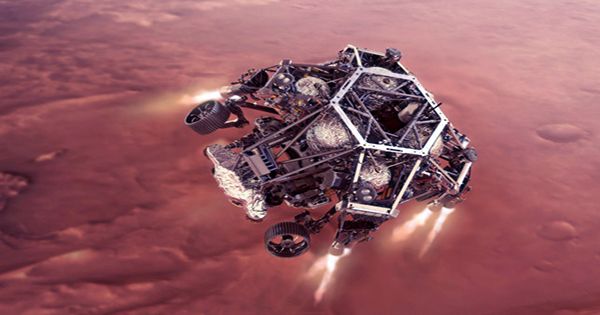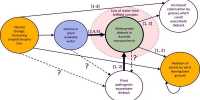About two weeks ago, NASA’s Mars 2020 Perseverance Rover landed on Mars after a seven-month journey. The mission team was quick to secure some incredible images from inside the Jezero Crater and will be coming soon. To add to the collections, NASA and the European Space Agency (ESA) have also released images of Jezero Crater. So, can you persevere in the images? The scattered image of the ESA-Roscosmos Trace Gas Orbiter showed not only the rover, but also the remainder of the landing. The heatshield, the parachute, the rear shell, and even its descent stage (starring the crane in the sky) are all visible in an amusing family portrait that spans several kilometers.
The mission is to study the clean atmosphere of Mars and its rare elements: hope had better understand the trace gases in the air of the Red Planet. It has created one of several missions – old and new – trying to solve the planet’s mystery from orbit. The photo was taking five days after landing.
We need sharp eyes for a more detailed picture of perseverance from orbit, and that is where the Mars Reconnaissance Orbiter (MRO) comes from its rover alone. Thanks to the HRSE, we can see some interesting details, including the V-shape created by the impact of the Sky Crane that it fell to the ground. The rear-facing cameras that actually indicated the V shape – as it should, considering how the hereditary phase would end and how was expect captured this impact sign.
As the rover begins to orbit the planet, the landing elements will gradually become covered in dust and eventually fade completely, and the HRSE will continue to monitor these changes. There may not be strong winds or rain on Mars but the bottom still changes over time.
On March 1, the HRSE team released an extended version of the image taken six days after the touchdown. It shows the rover surrounded by two bright spots on either side. These were due to the introduction of hovering sky cranes. The dark lose ground was removed as the rover slowly lowered to the ground as seen in the incredible footage of the landing. The figure gives a good idea of exactly how sharp the HRSE is. Perseverance measured about 3 by 2.7 meters (10 by 9 feet) and the MRO was about 290 kilometers (180 miles) from the surface when HRISE took this image.
NASA chose Jezero Crater as the landing site because it thought to have once supported a lake. For example, perseverance will search for signs of past microbial life there.















